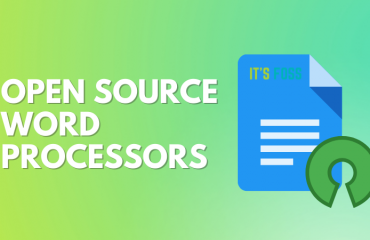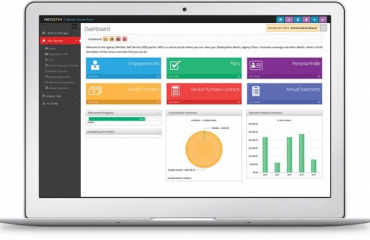Epson DS-790WN Wireless Network Color Document Scanner Review

A faithful scanning sidekick to tackle bottomless paper piles
I focus on printer and scanner technology and reviews. I have been writing about computer technology since well before the advent of the internet. I have authored or co-authored 20 books—including titles in the popular Bible, Secrets, and For Dummies series—on digital design and desktop publishing software applications. My published expertise in those areas includes Adobe Acrobat, Adobe Photoshop, and QuarkXPress, as well as prepress imaging technology. (Over my long career, though, I have covered many aspects of IT.)
Epson’s networkable DS-790WN scans high volumes of pages quickly and accurately, making it a great document management choice for small to midsize offices and workgroups.
Office document scanners haven’t changed much over the years. Case in point: The Epson DS-790WN Wireless Network Color Document Scanner ($749), a relatively modest upgrade to the DS-780N reviewed here in November 2017. The main difference is that while the older model offered only Ethernet, the DS-790WN adds wireless networking, working with iOS and Android mobile devices as well as PCs, and supporting walk-up scanning from its control panel. The Epson is fast, accurate, and supplied with highly capable scanning and document management software, making it an excellent choice for offices or workgroups with medium to heavy volume requirements. A three-year warranty cinches its win as an Editors’ Choice pick among networkable desktop document scanners.
The DS-970WN weighs 8.1 pounds and measures 6.6 by 11.6 by 6.5 inches (HWD) with its trays closed. It’ll never be that size in your office, however—like most document scanners, the Epson takes up about three times the space when open for business.
Similarly sized competitors include (among others) the Canon ImageFormula DR-M260 and the Panasonic KV-S1057C-MKII, along with the more recent Editors’ Choice recipients the Fujitsu fi-8170 and the Raven Pro Document Scanner. These machines vary an inch or two in depth or width and a pound or two in weight, but essentially have similar footprints. And most can be adjusted that, with smaller loads, pages can spill out onto your desk, saving the space occupied by pulling out the output tray.
Not only is the DS-970WN able to connect to several different types of devices (as we’ll discuss in a minute), but you can also configure the scanner and capture documents directly from its 4.3-inch touch-screen control panel. You can set up individual scan jobs on the go, or define up to 30 preconfigured workflow profiles containing all aspects of a job from resolution to file format (image PDF, searchable PDF, Microsoft Word or Excel, and so on) and destination (a local drive, an email attachment, FTP, one of several cloud sites, and more).
You can also configure several security options from here, such as user authentication to control who can use the scanner. In addition to 30 user-defined scan jobs or workflow profiles, the DS-790WN supports individual users with their own profiles. In other words, after you (as the admin) set up users, they can configure sets of profiles that initiate different scan jobs tailored to their needs. And you can customize profiles and set up users remotely over the internet.
In other words, anybody in the office can walk up to the scanner, insert a stack of documents, choose a preset from the control panel, press Scan, and walk away. The Epson and its accompanying software do the rest. You can, of course, also define and choose presets from the bundled software, which we’ll describe in the next section.
As for paper handling, the DS-790WN’s automatic document feeder (ADF) holds up to 100 sheets in sizes ranging from 2 by 2 inches up to legal (8.5 by 14 inches). In long mode, it scans documents up to 20 feet long. The device’s maximum daily duty cycle is 7,000 scans, which is a lot considering that you must completely fill the ADF 70 times to get there.
The scanner and software support numerous productivity and convenience features, such as the ability to capture and archive credit card, business card, and passport data.
Of the other scanners mentioned above, all match the Epson’s 100-sheet ADF except for the Canon’s 80-sheet feeder. As for their daily duty cycles, the DS-970WN’s 7,000 scans is about average or perhaps even a little low. The Raven Pro is good for an unspectacular 6,000 scans per day; the Panasonic for 8,000; and the Fujitsu for up to 10,000.
Connectivity options for the DS-790WN include Wi-Fi, Ethernet, and USB 3, a versatile configuration that supports most computing devices including handheld smartphones and tablets.
In addition to PCs and Macs, you can connect to the scanner wirelessly from most mobile devices. For a more secure connection, the Epson also supports Ethernet wired networking or connecting to a single PC via USB.
You can also scan to USB flash memory drives, as well as connecting to authentication devices to control which users can access the scanner.
Besides the Smart Panel app, bundled software includes Twain and ISIS drivers for use with the numerous third-party programs (such as Microsoft Word and Excel, Adobe Acrobat, and oh-so-many others) that support scanning directly into them. The company also throws in Epson Scan 2, a robust scanner interface, and Document Capture Pro, which is exactly what it sounds like—a document management app for archiving your organization’s information.
Epson rates the DS-790WN’s scanning speed at 45 one-sided pages per minute (ppm) or 90 two-sided images per minute (ipm, where each page side counts as an image). This is in the middle of the pack among office scanners. The Canon DR-M260 and Raven Pro are rated at 60ppm and 120ipm. The Panasonic is rated at 65ppm and 130ipm, while the Fujitsu fi-8170 is quickest at 70ppm and 140ipm.
I tested the DS-790WN using the Epson Scan 2 and Document Capture Pro programs over a USB connection to our usual Intel Core i5 testbed running Windows 10 Pro. For my first test, I clocked the Epson as it scanned our one-sided (simplex) 25-page and two-sided (duplex) 50-page text documents, converted the scanned text to image PDF format, and saved the file.
The scanner managed 46.2ppm for the single-sided and 91.7ipm for the double-sided test, slightly exceeding its ratings. The Fujitsu led the way at 72.9ppm and 149ipm, with the Raven Pro next at 61.2ppm and 124.4ipm.
When scanning our two-sided 25-page (50 sides) document to the more versatile searchable PDF format, the DS-790WN took 33 seconds, which is 19 seconds faster than its predecessor and about average among the machines mentioned here. The fi-8170 handled the same job in 25 seconds, with the Canon taking a sluggish 53 seconds.
As for optical character recognition (OCR) accuracy, I haven’t had to report poor performance from a scanner—any scanner, from inexpensive portables to high-volume desktop document managers—in several years. Reading both our serif (Times New Roman) and sans-serif (Arial) font pages error-free in sizes down to 6 points, the Epson proved both highly accurate and about average nowadays. In most office environments, zero mistakes with 6-point type is—since most documents don’t contain text nearly that small—basically perfect.
Of the scanners discussed here, only the Epson’s predecessor, the DS-780N, did noticeably worse, only reading Times New Roman down to 8 points. In most cases, you won’t need to make any corrections. You can’t beat that.
Compared to the other midrange to high-volume document scanners discussed here, the Epson DS-790WN’s only real shortcoming is that it’s slower. But its 100-sheet ADF and splendid OCR accuracy make it plenty fast enough for all but the heaviest enterprise applications, handling as much as a few thousand pages daily. It’s not exactly an impulse buy at $749, but it’s fairly priced—the Fujitsu fi-8170’s superior speed carries an $1,195 MSRP, and that scanner lacks Wi-Fi and mobile device support. The Epson is a great scanner for small to midsize workgroups and offices, and its three-year warranty tips the scale into Editors’ Choice territory.
Epson’s networkable DS-790WN scans high volumes of pages quickly and accurately, making it a great document management choice for small to midsize offices and workgroups.
Sign up for Lab Report to get the latest reviews and top product advice delivered right to your inbox.
This newsletter may contain advertising, deals, or affiliate links. Subscribing to a newsletter indicates your consent to our Terms of Use and Privacy Policy. You may unsubscribe from the newsletters at any time.
Your subscription has been confirmed. Keep an eye on your inbox!
Advertisement
I focus on printer and scanner technology and reviews. I have been writing about computer technology since well before the advent of the internet. I have authored or co-authored 20 books—including titles in the popular Bible, Secrets, and For Dummies series—on digital design and desktop publishing software applications. My published expertise in those areas includes Adobe Acrobat, Adobe Photoshop, and QuarkXPress, as well as prepress imaging technology. (Over my long career, though, I have covered many aspects of IT.)
In addition to writing hundreds of articles for PCMag, over the years I have also written for many other computer and business publications, among them Computer Shopper, Digital Trends, MacUser, PC World, The Wirecutter, and Windows Magazine. I also served as the Printers and Scanners Expert at About.com (now Lifewire).
source




